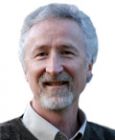Resilience
Creating Pathways to Resilience: The Whole Person Change Process
"I am larger than I thought, and more wonderful."
-Walt Whitman
Posted February 6, 2011

"I am larger than I thought, and more wonderful.
-Walt Whitman
Last week I saw a woman who had experienced years of unrelenting anxiety and depression. She was grieving the many ways these conditions had held her back and diminished her life. In a moving statement expressing both her grief and her defiant strength, she cried, "I am more than this! My life is more than this!"

In my work with Partners in Resilience, we encounter people with such entrenched challenges daily. While not everyone is as brave as this woman, all wish to reclaim more of their wholeness, to grow into larger versions of themselves. They want to change their lives for the better, but after years of trying unsuccessfully to do so, they feel stymied and stuck.
We share the poet's belief that we are larger than we usually define ourselves to be. Yet achieving healthy, true and lasting change remains elusive, the holy grail of the healing arts. How can we encourage the kind of enduring changes that are longed for by so many sufferers of anxiety and depression?
THE WHOLE PERSON CHANGE PROCESS
I am indebted to my colleagues, Sandra Kacher and Susan Bourgerie, who have articulated the pathway to deep and lasting change as The Whole Person Change Process. Because anxiety and depression affect the whole person, we seek to engage all aspects of ourselves as we heal from these complex conditions. They describes several principles at the core of this process:
1. The pathway that leads to a resilient and joyful life is grounded in radical self-acceptance.
This is not simply another self-improvement project. The starting point is acceptance of yourself and your life just as they are at this moment in time. This runs counter to the approach so often encountered, which is rooted in self-criticism and the drive for "a better me". We're not talking about a passive or resigned state of acceptance, but one that is energized and forward-looking.
There is a Japanese word that captures the dynamic tension created by acceptance and the desire for change - arugamama. Arugamama is a state of unconditional acceptance of yourself and your life as they are at this moment, but with the simultaneous intention to act in positive ways to create change. As one Buddhist teacher humorously put it, "You are perfect as you are...and you could use some improvement!" Beginning with this energized self-acceptance is the ultimate "start where you are" stance.
2. Whole person change begins deep within.
The most sustaining motivation for change comes from connecting mindfully and compassionately with our inner suffering and the desire for relief from that suffering. This is what the woman above did in the moment that she exclaimed, "I am more than this!"
Change that is based on what we believe we should be, or based on the standards set by others, is often short-lived. Being willing to listen deeply and honor our desire for change in a compassionate way leads to sustainable change.
3. Resistance to change is normal, but it is not the final word.
If this is truly whole-person change, then we must include all parts of ourselves-even our own resistance to change. We may wish it weren't there, yet resistance is natural, and is part of what we must accept and work with if we are to stay on the path of change.
It may seem paradoxical, but even an unhealthy state, if it has been there a long time, has become the new normal. Mostly for reasons of survival, the body and brain are designed to keep things as they are, even if there are bad habits that are harming us. It does us no good to judge ourselves harshly for being "weak" or "undisciplined". It is closer to the truth to simply acknowledge that we are stuck and that there will be natural resistance to getting unstuck. We must develop mindful awareness and the ability to look deeply into the nature of our resistance in order to become skillful enough to move forward on the pathway to healthy change.
4. All change is a process, and not a simple, linear one.
The self-improvement model of change often gives the impression that, if you are doing it right, you will experience continuous and sequential improvement. Somewhere on the horizon is the perfect life you have imagined for yourself. Setbacks are felt as a failure and after a few of them most people become discouraged and give up.
In the Whole Person Change Process we may go on and off the path of change many times, and may even feel we're going back to the beginning. This, too, is normal and expected. We only need to acknowledge it, pick ourselves up wherever we are, and return to the pathway we have set upon. There's an old Japanese proverb that says it simply: "Fall down seven times, get up eight." The important thing is to notice we've fallen and get back on the path.
5. Change happens in connection.
In contrast to our individualistic Western culture, which puts the onus on the individual to initiate and accomplish change, we believe it is important to reach beyond yourself in the healing process - to build your network of connection that will feed and sustain you as you change. This network will include family, friends, and community, as well as connection with your own spirit and a source of meaning and purpose in your life. As the Dalai Lama has said, "We can live without religion and meditation, but no one can survive without human affection."
To learn more about Partners in Resilience or the books The Chemistry of Joy or The Chemistry of Calm, go to our website, partnersinresilience.com.




